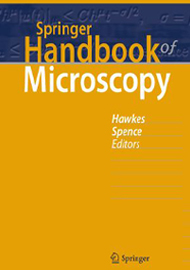
This book highlights the unity of electron microscopy, X-ray microscopy and optical microscopy: diffraction, aberrations, three-dimensional reconstruction algorithms, Fourier optics, detectors and contrast mechanisms across various modalities of microscopy.
This wide coverage of various types of microscopies—albeit with the omission of separate chapters on photoacoustic microscopy and light-sheet fluorescence microscopy—offers the reader access to the disparate types of microscopies, which fosters interdisciplinary collaboration. The book also covers topics ranging from the various types of electron microscopies, lensless imaging techniques such as holography and ptychography, fluorescence and modern superresolution optical microscopies, to near-field scanning-probe microscopes.
This handbook is a recommended source of information on microscopy theory, instrumentation, applications, limitations, trade-offs and pitfalls. The pitfall of specimen damage due to electrons, X-rays or photons, while mitigated with modern advances, still persists. Similarly, aberrations, motion artifacts, noise and other artifacts confound modern microscopies.
The contributors have produced outstanding chapters, which should be noted for their comprehensive analysis of the theory and the instruments, their critical selection of figures, and their selection of key references.
Review by Barry R. Masters, Fellow of AAAS, OSA and SPIE.
The opinions expressed in the book review section are those of the reviewer and do not necessarily reflect those of OPN or OSA.
